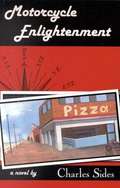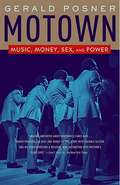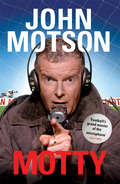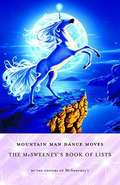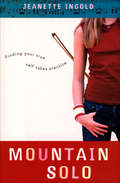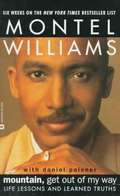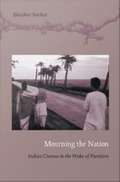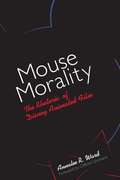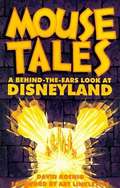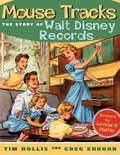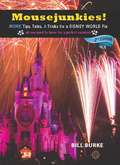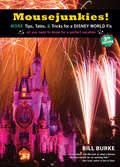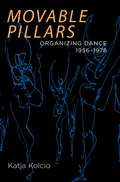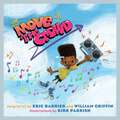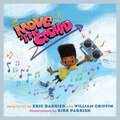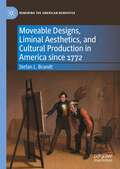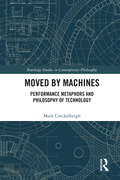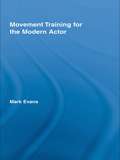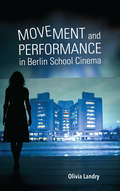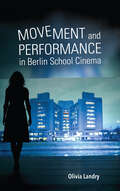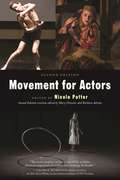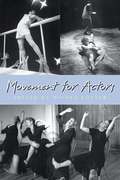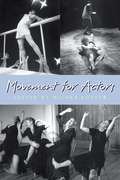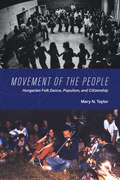- Table View
- List View
Motorcycle Enlightenment
by Charles SidesALAN PIERCE-in his forties, divorced, clueless, a bit neurotic, without a job-can't find his way across the street without getting lost, it seems. The only thing Pierce knows for certain is where to find really good pizza on the Ocean City, New Jersey, boardwalk-and that's as far as he gets in his "cross-country motorcycle odyssey" in search of enlightenment. He ditches the idea of traveling to the West Coast (he can't find it), sells his motorcycle (he gets leg cramps), and digs in where he finds himself. As he searches for inner peace and self-understanding, his life becomes a paradoxical study of indirection: he goes by not going, he bikes by selling his bike. Following his "doughnut" wisdom, Alan calms down, relaxes his mind, and learns to meditate, all the while observing himself with the bemused and sometimes startled fascination of an anthropologist. Quirky, clever, and somehow actually instructive, Motorcycle Enlightenment is a stand-up comic's take on adventure along the spiritual path.
Motown: Music, Money, Sex, and Power
by Gerald PosnerIn 1959, twenty-nine-year-old Berry Gordy, who had already given up on his dream to be a champion boxer, borrowed eight hundred dollars from his family and started a record company. A run-down bungalow sandwiched between a funeral home and a beauty shop in a poor Detroit neighborhood served as his headquarters. The building's entrance was adorned with a large sign that improbably boasted "Hitsville U. S. A. " The kitchen served as the control room, the garage became the two-track studio, the living room was reserved for bookkeeping, and sales were handled in the dining room. Soon word spread that any youngster with a streak of talent should visit the only record label that Detroit had seen in years. The company's name was Motown. Motown cuts through decades of unsubstantiated rumors and speculation to tell the true behind-the-scenes narrative of America's most exciting musical dynasty. It follows the company and its amazing roster of stars from the tumultuous growth years in Detroit, to the drama and intrigue of Hollywood in the 1970s, to resurgence in 2002. Set against the civil rights movement, the decay of America's northern industrial cities, and the social upheaval of the 1960s, Motown is a tale of the incredible entrepreneurship of Berry Gordy. But it also features the moving stories of kids from Detroit's inner-city projects who achieved remarkable success and then, in many cases, found themselves fighting the demons that so often come with stardom--drugs, jealousy, sexual indulgence, greed, and uncontrollable ambition. Motown features an extraordinary cast of characters, including Diana Ross, Michael Jackson, Marvin Gaye, Smokey Robinson, and Stevie Wonder. They are presented as they lived and worked: a clan of friends, lovers, competitors, and sometimes vicious foes. Motown reveals how the hopes and dreams of each affected the lives of the others and illustrates why this singular story is a made-in-America Greek tragedy, the rise and fall of a supremely talented yet completely dysfunctional extended family. Based on numerous original interviews and extensive documentation, Motown benefits particularly from the thousands of pages of files crammed into the basement of downtown Detroit's Wayne County Courthouse. Those court records provide the unofficial--and hitherto largely untold--history of Motown and its stars, since almost every relationship between departing singers, songwriters, producers, and the label ended up in litigation. From its peaks in the late 1960s and early 1970s, when Motown controlled the pop charts and its stars were sought after even by the Beatles, through the inexorable slide caused by their failure to handle their stardom, Motown is a riveting and troubling look inside a music label that provided the unofficial soundtrack to an entire generation. From the Hardcover edition.
Motty: Forty Years in the Commentary Box
by John MotsonFrom Ronnie Radford to Wayne Rooney, John Motson's knowledge and passion for football are unrivalled. In Motty, he shares his story for the first time and guides us through a career which has spanned forty years and over 2,000 matches. From reporting on the exploits of the giant-killing Hereford team in the 1972 FA Cup that made his name on Match of the Day, to the estimated twenty-million viewers who tuned in to his commentary on England's match with Portugal at the 2006 World Cup, Motson's time in the commentary box has delivered some unforgettable anecdotes. In dozens of fascinating behind-the-scenes stories, we hear about the greatest football matches he has watched and the greatest players and managers he has been privileged to know. Many of them are football icons; Bill Shankly, Alex Ferguson, Brian Clough, Alf Ramsey, and Matt Busby, amongst countless others.Motty is essential reading for anyone who has grown up with the undisputed voice of football.
Mountain Man Dance Moves: The McSweeney's Book of Lists
by McSweeney'sIf a mountain man felt compelled to dance, how would he do it? If koala bears could talk, what would they say? And what's the right pickup line, if you're a necrophiliac? (Maybe "I'm pretty sure I'm not going to get you pregnant.") In the throes of debates like these, we're lucky to have the learned people of McSweeney's Internet Tendency, America's best low-budget humor website, and their edifying work. From their best-looking writers comes this collection of over three hundred lists, including..."Signs Your Unicorn Is Cheating on You.""Errors in Communication Between My Hairdresser and Me, in the Form of What I Said and What He Heard""Things This City Was Built On, Besides Rock 'n' Roll""Things This One Girl Sitting Near Me in a Movie Theater Said Out Loud When One of the Characters Was Shown Pulling Into a Gas Station""Future Winners of the New Yorker Cartoon Caption Contest""Adjectives Rarely Used by Wine Tasters""The Collected Apologies of Lawrence H. Summers, President of Harvard""Exactly What I Mean When I Say My Ex-Girlfriend Kristin and I 'Wanted Different Things from Life'"And much, much more...
Mountain Solo
by Jeanette IngoldAfter a disastrous concert, a teenage musical prodigy who&’s sick of the stress heads to Montana to figure out her next step . . . From the moment Tess picked up the violin as a child, it was clear she wasn&’t like other kids. She was a prodigy, and at sixteen her life is that of a virtuoso-to-be: constant training, special schools, and a big debut before an audience of thousands. But when she blows her moment in the spotlight, she throws it all away, moves from New York City to join her father and his new family in Montana, and tries to lead a normal life—whatever that is. But she&’s hardly arrived when she is drawn into a mystery: a hunt for the wilderness homestead of a lost pioneer who played violin himself. Maybe, through his story, Tess will figure out how to handle the expectations of others, and what she really wants for herself . . . &“The characters are likeable, and their love of music shines through . . . For anyone fascinated by the power of music and its effects on individuals&’ lives.&” —School Library Journal
Mountain: LIfe Lessons and Learned Truths
by Montel WilliamsBorn in Baltimore's black ghetto, Montel was the youngest of four children in a family that was hardworking but loving. At the suggestion of a family friend, he joined the Marine Corps. There he acquired an education, a sense of direction, and a respect for discipline--values he would never forget. Recognized as a natural leader, Montel was asked to conduct family support groups on base. An electrifying speaker, he was soon talking to auditoriums of teenagers across the nation, traveling at his own expense and learning, on the front lines of this country's toughest neighborhoods, how to spread the civilizing principles of Montel's own three Rs: restraint, responsibility, and respect. In his own inimitable, down-to-earth style, Montel now offers us the hard-hitting yet compassionate advice that has already touched the lives of so many. Based on his three R's, here is sound guidance on the difficult issues of violence, drugs, peer pressure, sex, poverty, and the lure of the streets, as well as their antidotes: education, commitment, self-esteem, and love.
Mourning the Nation: Indian Cinema in the Wake of Partition
by Bhaskar SarkarWhat remains of the "national" when the nation unravels at the birth of the independent state? The political truncation of India at the end of British colonial rule in 1947 led to a social cataclysm in which roughly one million people died and ten to twelve million were displaced. Combining film studies, trauma theory, and South Asian cultural history, Bhaskar Sarkar follows the shifting traces of this event in Indian cinema over the next six decades. He argues that Partition remains a wound in the collective psyche of South Asia and that its representation on screen enables forms of historical engagement that are largely opaque to standard historiography. Sarkar tracks the initial reticence to engage with the trauma of 1947 and the subsequent emergence of a strong Partition discourse, revealing both the silence and the eventual "return of the repressed" as strands of one complex process. Connecting the relative silence of the early decades after Partition to a project of postcolonial nation-building and to trauma's disjunctive temporal structure, Sarkar develops an allegorical reading of the silence as a form of mourning. He relates the proliferation of explicit Partition narratives in films made since the mid-1980s to disillusionment with post-independence achievements, and he discusses how current cinematic memorializations of 1947 are influenced by economic liberalization and the rise of a Hindu-chauvinist nationalism. Traversing Hindi and Bengali commercial cinema, art cinema, and television, Sarkar provides a history of Indian cinema that interrogates the national (a central category organizing cinema studies) and participates in a wider process of mourning the modernist promises of the nation form.
Mouse Morality: The Rhetoric of Disney Animated Film
by Annalee R. WardKids around the world love Disney animated films, and many of their parents trust the Disney corporation to provide wholesome, moral entertainment for their children. Yet frequent protests and even boycotts of Disney products and practices reveal a widespread unease with the sometimes mixed and inconsistent moral values espoused in Disney films as the company attempts to appeal to the largest possible audience. In this book, Annalee R. Ward uses a variety of analytical tools based in rhetorical criticism to examine the moral messages taught in five recent Disney animated films--The Lion King, Pocahontas, The Hunchback of Notre Dame, Hercules, and Mulan. Taking the films on their own terms, she uncovers the many mixed messages they purvey: for example, females can be leaders--but male leadership ought to be the norm; stereotyping is wrong--but black means evil; historical truth is valued--but only tell what one can sell, etc. Adding these messages together, Ward raises important questions about the moral ambiguity of Disney's overall worldview and demonstrates the need for parents to be discerning in letting their children learn moral values and life lessons from Disney films.
Mouse Tales: A Behind-the-Ears Look at Disneyland
by Art Linkletter David KoenigThe first unauthorized behind-the-scenes look at the Happiest Place on Earth.
Mouse Tracks: The Story of Walt Disney Records
by Greg Ehrbar Tim HollisAround the world there are grandparents, parents, and children who can still sing ditties by Tigger or Baloo the Bear or the Seven Dwarves. This staying power and global reach is in large part a testimony to the pizzazz of performers, songwriters, and other creative artists who worked with Walt Disney Records. Mouse Tracks: The Story of Walt Disney Records chronicles for the first time the fifty-year history of the Disney recording companies launched by Walt Disney and Roy Disney in the mid-1950s, when Disneyland Park, Davy Crockett, and the Mickey Mouse Club were taking the world by storm. The book provides a perspective on all-time Disney favorites and features anecdotes, reminiscences, and biographies of the artists who brought Disney magic to audio. Authors Tim Hollis and Greg Ehrbar go behind the scenes at the Walt Disney Studios and discover that in the early days Walt Disney and Roy Disney resisted going into the record business before the success of "The Ballad of Davy Crockett" ignited the in-house label. Along the way, the book traces the recording adventures of such Disney favorites as Mickey Mouse, Donald Duck, Cinderella, Bambi, Jiminy Cricket, Winnie the Pooh, and even Walt Disney himself. Mouse Tracks reveals the struggles, major successes, and occasional misfires. Included are impressions and details of teen-pop princesses Annette Funicello and Hayley Mills, the Mary Poppins phenomenon, a Disney-style "British Invasion," and a low period when sagging sales forced Walt Disney to suggest closing the division down. Complementing each chapter are brief performer biographies, reproductions of album covers and art, and facsimiles of related promotional material. Mouse Tracks is a collector's bonanza of information on this little-analyzed side of the Disney empire. Learn more about the book and the authors at www.mousetracksonline.com.
Mousejunkies!
by Bill BurkeA guidebook with a decidedly different approach, the second edition of Mousejunkies is a collection of humorous travelogues and insider how-to secrets compiled after scores of trips to Walt Disney World. The book draws on the insights of a panel of Disney fanatics - The Mousejunkies - following dozens of personal vacations, trade shows and press trips in recent years. This second edition brings everything up to date with countless new tips, tricks, and tales.Mousejunkies provides tips and travel plans told through personal accounts - something that sets it apart from all the other guides.All of the most important topics are covered: When to go, where to stay, what to do and where to eat. But readers will also learn how to indulge in an all-day chicken wing and beer football orgy at Walt Disney World, how to extract your family from Fantasmic with your sanity intact, where to catch a mid-afternoon catnap in the theme park, and even how wrong a Disney cruise can go.Mousejunkies is more than one travel writer's experiences at one of the most popular vacation destinations in the world. The Mousejunkies are a group of seemingly well-adjusted adults who have found themselves inexplicably drawn to Walt Disney World, again and again. Each has taken his or her own path, finding their way separately. When the smoke cleared, the group found itself back in reality, staring at one another over a pile of discarded annual passes and a useless collection of novelty hats.The stories - wry, humorous and told with an affection gained through years of Disney addiction - paint vivid portraits of a creatively engineered world, where unexpected surprises create lasting memories.The tips - valuable information designed to help readers get more out of their vacations - are told with a sly wink and the desire to share the secrets that make trips to central Florida more memorable.From touring plans to tongue-in-cheek reviews of the theme parks' restrooms, Mousejunkies provides readers with useful information couched in obsessively-detailed narrative with a humorous touch.
Mousejunkies!
by Bill BurkeA guidebook with a decidedly different approach, "Mousejunkies! 3rd Edition” is a collection of humorous travelogues and insider how-to secrets compiled after scores of trips to Walt Disney World. The book draws on the insights of a panel of Disney fanatics -- The Mousejunkies -- following dozens of personal vacations, trade shows and press trips in recent years. This third edition brings everything up to date with countless new tips, tricks, and tales. "Mousejunkies!” provides tips and travel plans told through personal accounts - something that sets it apart from all the other guides. All of the most important topics are covered: When to go, where to stay, what to do and where to eat. But readers will also learn Zen and the art of not melting down under the Florida sun, how to extract your family from Fantasmic with your sanity intact, where to catch a mid-afternoon catnap in the theme parks, and even how wrong things go when Epcrotch strikes. "Mousejunkies!” is more than one travel writer’s experiences at one of the most popular vacation destinations in the world. The Mousejunkies are a group of seemingly well-adjusted adults who have found themselves inexplicably drawn to Walt Disney World, again and again. Each has taken his or her own path, finding their way separately. When the smoke cleared, the group found itself back in reality, staring at one another over a pile of discarded annual passes and a useless collection of novelty hats. The stories - wry, humorous and told with an affection gained through years of Disney addiction - paint vivid portraits of a creatively engineered world, where unexpected surprises create lasting memories. The tips - valuable information designed to help readers get more out of their vacations - are told with a sly wink and the desire to share the secrets that make trips to central Florida more memorable. From touring plans to tongue-in-cheek reviews of the theme parks’ restrooms, "Mousejunkies!” provides readers with useful information couched in obsessively-detailed narrative with a humorous touch.
Movable Pillars: Organizing Dance, 1956–1978
by Katja KolcioMovable Pillars traces the development of dance as scholarly inquiry over the course of the 20th century, and describes the social-political factors that facilitated a surge of interest in dance research in the period following World War II. This surge was reflected in the emergence of six key dance organizations: the American Dance Guild, the Congress on Research in Dance, the American Dance Therapy Association, the American College Dance Festival Association, the Dance Critics Association, and the Society of Dance History Scholars. Kolcio argues that their founding between the years 1956 and 1978 marked a new period of collective action in dance and is directly related to the inclusion of moving bodies in scholarly research and the ways in which dance studies interfaces with other fields such as feminist studies, critical research methods, and emancipatory education. An impeccable work of archival scholarship and interpretive history, Movable Pillars features nineteen interviews with dance luminaries who were intimately involved in the early years of each group. This is the first book to focus on the founding of these professional organizations and constitutes a major contribution to the understanding of the development of dance in American higher education.
Move On: Adventures in the Real World
by Linda EllerbeeEllerbee gives details on how she moved from working with ABC to CNN.
Move the Crowd: A Children's Picture Book (LyricPop #0)
by Eric Barrier William GriffinInnovative illustrator Kirk Parrish brings the iconic song "Move the Crowd" to life for the first time as a children's picture book. With knowledge of self, there's nothing I can't solve At 360 degrees I revolve This is actual fact, i
Move the Crowd: A Children's Picture Book (LyricPop)
by Eric Barrier William GriffinInnovative illustrator Kirk Parrish brings the iconic song “Move the Crowd” to life for the first time as a children’s picture book. “'Move The Crowd' as a children’s picture book is truly as wondrous as it sounds.” —Exclusive Magazine "With knowledge of self, there’s nothing I can’t solve At 360 degrees I revolve This is actual fact, it’s not an act, it’s been proven Indeed and I proceed to make the crowd keep moving . . ." Innovative illustrator Kirk Parrish brings the iconic song “Move the Crowd” to life for the first time as a children’s picture book. The lyrics to Eric B. and Rakim’s hit song provide the inspiration for this instant classic. Follow along as Parrish pairs the lyrics with colorful illustrations about a boy being absorbed into his stereo and dropped into a colorless world where the music is dull and the people uninspired. The ensuing transformation he brings to the crowd with his music is one that the whole family can enjoy together.
Moveable Designs, Liminal Aesthetics, and Cultural Production in America since 1772 (Renewing the American Narrative)
by Stefan L. BrandtThe book explores the liminal aesthetics of U.S. cultural and literary practice. Interrogating the notion of a presumptive unity of the American experience, Moveable Designs argues that inner conflict, divisiveness, and contradiction are integral to the nation’s cultural designs, themes, and motifs. The study suggests that U.S. literary and cultural practice is permeated by ‘moveable designs’—flexible, yet constant features of hegemonial practice that constitute an integral element of American national self-fashioning. The naturally pervasive liminality of U.S. cultural production is the key to understanding the resilience of American culture. Moveable Designs looks at artistic expressions across various media types (literature, paintings, film, television), seeking to illuminate critical phases of U.S. American literature and culture—from the revolutionary years to the movements of romanticism, realism, and modernism, up to the postmodern era. It combines a wide array of approaches, from cultural history and social anthropology to phenomenology. Connecting an analysis of literary and cultural texts with approaches from design theory, the book proposes a new way of understanding American culture as design. It is one of the unique characteristics of American culture that it creates—or, rather, designs—potency out of its inner conflicts and apparent disunities. That which we describe as an identifiable ‘American identity’ is actually the product of highly vulnerable, alternating processes of dissolution and self-affirmation.
Moved by Machines: Performance Metaphors and Philosophy of Technology (Routledge Studies in Contemporary Philosophy)
by Mark CoeckelberghGiven the rapid development of new technologies such as smart devices, robots, and artificial intelligence and their impact on the lives of people and on society, it is important and urgent to construct conceptual frameworks that help us to understand and evaluate them. Benefiting from tendencies towards a performative turn in the humanities and social sciences, drawing on thinking about the performing arts, and responding to gaps in contemporary artefact-oriented philosophy of technology, this book moves thinking about technology forward by using performance as a metaphor to understand and evaluate what we do with technology and what technology does with us. Focusing on the themes of knowledge/experience, agency, and power, and discussing some pertinent ethical issues such as deception, the narrative of the book moves through a number of performance practices: dance, theatre, music, stage magic, and (perhaps surprisingly) philosophy. These are used as sources for metaphors to think about technology—in particular contemporary devices and machines—and as interfaces to bring in various theories that are not usually employed in philosophy of technology. The result is a sequence of gestures and movements towards a performance-oriented conceptual framework for a thinking about technology which, liberated from the static, vision-centred, and dualistic metaphors offered by traditional philosophy, can do more justice to the phenomenology of our daily embodied, social, kinetic, temporal, and narrative performances with technology, our technoperformances. This book will appeal to scholars of philosophy of technology and performance studies who are interested in reconceptualizing the roles and impact of modern technology.
Movement Training for the Modern Actor (Routledge Advances in Theatre & Performance Studies)
by Mark EvansThis book is the first critical analysis of the key principles and practices informing the movement training of actors in the modern era. Focusing on the cultural history of modern movement training for actors, Evans traces the development of the ‘neutral’ body as a significant area of practice within drama school training and the relationship between movement pedagogy and the operation of discipline and power in shaping the professional identity of the actor. The volume looks in detail at the influence of the leading figures in movement training — Laban, Alexander, Copeau and Lecoq — on twentieth century professional actor training, and is informed by interviews with students and staff at leading English drama schools. Mark Evans re-evaluates the significance of movement training in the professional drama school, offering a new understanding of the body as a site for performative resistance to industrialization. Despite the publication of a number of ‘how to’ books on movement training for the professional acting student, this is the first text to look behind the curtain and write the unseen biography of the actor’s body.
Movement and Performance in Berlin School Cinema (New Directions in National Cinemas)
by Olivia LandryThrough a study of the contemporary German film movement the Berlin School, Olivia Landry examines how narrative film has responded to our highly digitalized and mediatized age, not with a focus on stasis and realism, but by turning back to movement, spectacle, and performance. She argues that a preoccupation with presence, liveness, and affect—all of which are viewed as critical components of live performance—can be found in many of the films of the Berlin School. Challenging the perception that the Berlin School is a sheer adherent of "slow cinema," Landry closely analyzes the use of movement, dynamism, presence, and speed in a broad selection of films to show how filmmakers such as Christian Petzold, Angela Schanelec, Thomas Arslan, and Christoph Hochhäusler invoke the pulse of the kinesthetic and the tangibly affective. Her analysis draws on an array of film theories from early materialism to body theories, phenomenology, and contemporary affect theories. Arguing that these theories readily and energetically forge a path from film to performance, Landry traces a trajectory between the two through which live experience, presence, spectacle, intersubjectivity, and the body in motion emerge and powerfully intersect. Ultimately, Movement and Performance in Berlin School Cinema expands the methodological and disciplinary boundaries of film studies by offering new ways of articulating and understanding movement in cinema.
Movement and Performance in Berlin School Cinema (New Directions in National Cinemas)
by Olivia Landry“A rich and welcome addition to the surge of scholarly interest in the Berlin School.” —Studies in European CinemaThrough a study of the contemporary German film movement the Berlin School, Olivia Landry examines how narrative film has responded to our highly digitalized and mediatized age, not with a focus on stasis and realism, but by turning back to movement, spectacle, and performance.She argues that a preoccupation with presence, liveness, and affect—all of which are viewed as critical components of live performance—can be found in many of the films of the Berlin School. Challenging the perception that the Berlin School is a sheer adherent of “slow cinema,” Landry closely analyzes the use of movement, dynamism, presence, and speed in a broad selection of films to show how filmmakers such as Christian Petzold, Angela Schanelec, Thomas Arslan, and Christoph Hochhäusler invoke the pulse of the kinesthetic and the tangibly affective. Her analysis draws on an array of film theories from early materialism to body theories, phenomenology, and contemporary affect theories. Arguing that these theories readily and energetically forge a path from film to performance, Landry traces a trajectory between the two through which live experience, presence, spectacle, intersubjectivity, and the body in motion emerge and powerfully intersect. Ultimately, Movement and Performance in Berlin School Cinema expands the methodological and disciplinary boundaries of film studies by offering new ways of articulating and understanding movement in cinema.
Movement for Actors
by Barbara Adrian Nicole Potter Mary FleischerIn this updated rich resource for actors, renowned movement teachers and directors reveal the physical skills needed for the stage and the screen. Readers will gain remarkable insights into the physical skills and techniques used in a wide variety of performance styles through ready-to-use exercises and approaches. Included in this new edition are chapters covering:Stage combatYoga for actorsMartial artsBody-mind centeringAuthentic movementBartenieff fundamentalsGrotowski-based movementThose who want to pursue serious training will be able to consult the appendix for listings of the best teachers and schools in the country. This inspiring collection is a must-read for all actors, directors, and teachers of theater looking for stimulation and new approaches.Allworth Press, an imprint of Skyhorse Publishing, publishes a broad range of books on the visual and performing arts, with emphasis on the business of art. Our titles cover subjects such as graphic design, theater, branding, fine art, photography, interior design, writing, acting, film, how to start careers, business and legal forms, business practices, and more. While we don't aspire to publish a New York Times bestseller or a national bestseller, we are deeply committed to quality books that help creative professionals succeed and thrive. We often publish in areas overlooked by other publishers and welcome the author whose expertise can help our audience of readers.
Movement for Actors
by Nicole PotterTeachers and practitioners offer actors, directors, and students both practical suggestions and inspiration on how to tell the story through the body. Body basics, beyond glove and fan, and schools of thought are among the themes.
Movement for Actors
by Nicole PotterIn this rich resource for American actors, renowned movement teachers and directors reveal the physical skills needed for the stage and screen. Experts in a wide array of disciplines provide remarkable insight into the Alexander technique, the use of psychological gesture, period movement, the work of Rudolph Laban, postmodern choreography, and Suzuki training, to name but a few. Those who want to pursue serious training will be able to consult the appendix for listings of the best teachers and schools in the country. This inspiring collection is a must read for all actors, directors, and teachers of theater looking for stimulation and new approaches.
Movement of the People: Hungarian Folk Dance, Populism, and Citizenship
by Mary N. TaylorSince 1990, thousands of Hungarians have vacationed at summer camps devoted to Hungarian folk dance in the Transylvanian villages of neighboring Romania. This folk tourism and connected everyday practices of folk dance revival take place against the backdrop of an increasingly nationalist political environment in Hungary. In Movement of the People, Mary N. Taylor takes readers inside the folk revival movement known as dancehouse (táncház) that sustains myriad events where folk dance is central and championed by international enthusiasts and UNESCO. Contextualizing táncház in a deeper history of populism and nationalism, Taylor examines the movement's emergence in 1970s socialist institutions, its transformation through the postsocialist period, and its recent recognition by UNESCO as a best practice of heritage preservation. Approaching the populist and popular practices of folk revival as a form of national cultivation, Movement of the People interrogates the everyday practices, relationships, institutional contexts, and ideologies that contribute to the making of Hungary's future, as well as its past.
